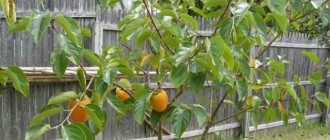Varieties common in Russia
When talking about willow, the adjective “weeping” is often added, and many people think that this is a separate variety of plant. In fact, this is a common characteristic of several varieties with a characteristic cascading crown. Many varieties of weeping willow are found in Russia.
A classic weeping variety , its elongated silver leaves combined with long flexible branches create a spectacular lush crown that flows like a tent. The crown diameter can reach 20 meters for an adult plant. The undoubted advantages of this variety include its unpretentiousness to soil and climate . Although white willow can grow even in soil with excess moisture, harsh winters with sudden temperature changes will not destroy it.
However, in the warm season, the tree requires a lot of light and heat - then the growth of the tree will be uniform, approximately 3 meters in five years. The maximum height of a willow tree of this variety is about 25 meters, and the trunk width is corresponding.
Flowering begins in the middle or end of spring, the flowers have a yellow-green color, collected in tassels up to five centimeters. A common popular name for willow flowers is cats, for the fluffiness and tenderness of the inflorescences.
Babylonian
Another recognizable and popular variety of weeping willow. from the previous one in a more elegant appearance . A mature tree reaches a height of about 12 meters, the crown spreads out in a similar diameter, and looks very delicate and elegant due to the thin flexible shoots flowing down. The color of the leaves themselves can be green with a golden tint or reddish. This tree can often be found in city parks, near water bodies.
Babylonian willow has several more subspecies, which are quite different from each other in appearance, but they all require a lot of sunlight and abundant watering.
We can safely say about this variety that it belongs to the decorative variety - since this tree adds less in height than in the girth of the lush head of foliage. The leaves come in various shapes, their color ranges from rich green to a grayish tint.
The main care for this variety consists of timely and proper watering . In the wild, goat willow is found on the edges of the forest, near roads and in ravines, that is, it does not need excessive watering and moisturizing, but it definitely loves water.
In order for the tree to delight with its beauty, fertilizer will also be useful. The complex option is suitable for feeding in spring and autumn - twice a season will be enough.
To ensure that the tree does not lose its aesthetic appeal, it is imperative to prune it .
An adult tree is pruned after the flowering period is over. Active growth will ensure that all shoots are cut to a third or two-thirds of their length.
Alpine
Another variety very loved by landscape designers. The plant can hardly be called dwarf, but its maximum height is 150-180 cm. A characteristic feature of the alpine willow is its early flowering - the flowers appear earlier than the leaves and have a very interesting color. Depending on the subspecies of the shrub, catkins on male trees can be orange, black, silver and even red.
Like all trees of the willow genus, the variety loves moisture and abundant watering , as well as a lot of sunlight. The decorative appearance requires mandatory pruning immediately after flowering has finished, and this happens in April.
In addition to the fact that the alpine variety is used in landscape design (including in alpine slides), it also takes root well in containers, decorating terraces and home “winter” gardens.
Entireleaf
One of the most beautiful varieties of ornamental willow - valued for its variegated foliage and crown, which forms very quickly. In demand both among gardeners and landscape designers.
Young shoots have a soft green tint, and mature leaves have an original color interspersed with white and pink. Under the scorching rays of the sun, variegated leaves may lose their brightness.
With proper and timely pruning, the crown will form at a slight distance from the ground, and will be about one and a half meters high. The crown of the plant is usually about a meter in diameter, but rarely exceeds one and a half meters.
Like all its fellows, the whole-leaved willow blooms, but only three years after thorough rooting . This low-growing species prefers open sunny places, but also grows quite well in partial shade, where the sun's rays are scattered and warm the plant during part of the daylight hours.
Holly
The official name of the Easter willow , whose thin branches are dotted with touching fluffy lumps, sounds exactly like this. There are at least three more accompanying names, but even without them, the willow is recognizable and loved by many since childhood, precisely because of this association with the bright holiday of the Resurrection of Christ.
Geographically, this plant is found everywhere, since it is perhaps the most unpretentious of the entire willow species. Sometimes willow is specially planted along river banks. In this way, the bank is strengthened, and siltation of the river is completely reduced to zero. It is worth noting separately that the plant is an excellent honey plant, and since it is one of the first honey plants to bloom, it serves as a good food source for bees. And beekeepers actively take advantage of this.
Shaggy or woolly
This shrub species differs from its fellows primarily in its frost resistance . Woolly willow grows successfully in the northern regions of Russia, Siberia, as well as in Scotland and Scandinavia.
Article on the topic: Multi-colored persimmon description and features
Tundra and forest-tundra as a habitat make plants creeping and stunted, and willow is no exception. It got its name, which speaks for itself, thanks to its shaggy, even slightly felt-like branches. At the same time, the leaves of the variety are dull, inexpressive in color.
The branches, in addition to their “increased shaggyness,” are also characterized by knotty and thickness.
This unpretentious, but in its own way spectacular variety is used to form a hedge, or rather, its lower part, since the shaggy willow rarely exceeds 1 meter in height and, unlike other types of willow, does not tolerate excess moisture in the soil and piercing cold winds.
Medicinal properties
In folk medicine, there are time-tested and mankind-tested remedies, the benefits of which are undoubted and which are used even in traditional medicine. These include willow. Its various parts, sometimes in combination with other plants, are used:
- for bleeding of gynecological origin
- as an antipyretic
- for malaria
- in case of dysfunction of the sweat glands
- for skin diseases such as erysipelas, fungus, etc.
For medicinal purposes, tree bark is mainly used. Willow branches are highly valued for their flexibility among wicker weavers.
Disease and pest control
Unfortunately, willow is quite susceptible to various pests, so you should detect them in a timely manner and begin combating them immediately. The most dangerous and common willow pests include:
Willow is susceptible to disease, so carry out preventative treatment
- Willow weevil. The most dangerous willow pest that can destroy the entire willow garden. It lives actively and quickly destroys the plant. The result is huge, in some cases, tunnels that cover the willow, and then a sharp drop of foliage. The weevil is most active in August. Unfortunately, there is no method of pest control. The only thing that can be done is to remove the damaged parts of the tree.
- Aphid. Unfortunately, this pest is known to many gardeners firsthand. Lives in large colonies, attacking young willow shoots. As a result, the tops of the branches are destroyed and the leaves turn yellow. Control method: kerosene-soap solution. About 2.5 liters of kerosene and 0.5 kg of green soap must be diluted in 75 liters of water. Spraying of the tree is carried out in the evening in the absence of strong wind.
- Willow cicada. Likes to lay numerous eggs in willow shoots. The result is cracked bark, an abundance of side shoots, and drying out of the main shoots. The fighting method is mechanical. To begin, generously coat the willow branches with tar/glue. All that remains is to wait for the pest and collect it manually.
- Leaf beetle. Black, as if burnt leaves and partially bare branches - this is what the activity of the leaf beetle can lead to. Control method: removing parts of the tree damaged by the pest and catching the beetle with bait in boxes coated with any adhesive.
Willow cultivation
The unpretentiousness of willow is known to everyone - this plant can take root in almost any soil. However, in light loamy soils, willow will feel much better than in sandstone and will delight you with its rapid growth.
An important point in choosing a place to plant a willow is the balance of light and shadow . Willow will not take root in full shade, but it will like partial shade and sunny open places. If in the area where the plant will be planted there is no open reservoir, near which it will be best, an area with groundwater will be suitable. Otherwise, the lack of natural sources of water will have to be compensated for by regular watering.
It is best to plant willow in early spring, before its first buds bloom. Another planting option is autumn, but after the natural movement of juices in the plant has been stopped. It is imperative to take into account that it is recommended to replant willow varieties that do not tolerate cold well in the spring, otherwise the plant will not take root before frost and will die. This can be prevented by mulching and covering the seedling.
- Pit for landing . The depth of the hole should be at least half a meter, and the width depends on the type of willow. For shrubs, a similar size is sufficient, but for tree species, at least 70 cm is needed.
- Drainage . It is especially required if planting is done in clayey rocks. The thickness of the drainage layer should be about 30 cm; crushed stone or sand are suitable as drainage.
- Mix peat, compost and soil in equal proportions, add 200 g. azofoski, mix thoroughly.
- Fill the hole one third with the prepared nutrient mixture and place the seedling in it. Fill with the rest of the soil, compact it and form a depression around the trunk.
- Pour two buckets of water under the seedling. If the plant is tall, it can be stabilized with a support stick.
Further care
- The seedling needs to be watered once a week , from two to five buckets of water per plant are required, and water must be poured not only on the ground, but also on the crown. Watering should be done early in the morning or after sunset. Young plants grow quite quickly, some varieties can add up to three meters per year, but the average increase is about half a meter to a meter.
- Two or three times a year you need to fertilize , the latter should be carried out no later than July. In the fall, it is imperative to remove fallen leaves from under the willow, since they contain tannins, and they can have a negative impact on the further growth of the willow.
- In the first three years, there is no need to prune the plant; the crown is formed. Its subsequent formation is carried out by pruning in the spring after the plant has flowered. Decorative varieties are pruned by 20 cm, this will allow the formation of a lush, beautiful crown.
Follow the rules of planting and care, and a healthy, beautiful tree will decorate your garden or summer cottage, as well as your yard and park.
Secrets of growing weeping willow
Weeping willow requires minimal care, so growing it in your summer cottage will not cause much trouble.
Watering and fertilizing
Since the tree loves moisture very much, it needs to be watered frequently and abundantly. One plant needs 20 liters of water once a week. In case of prolonged absence of precipitation, the volume is at least doubled. It is better to water in the morning, when the sun has not reached its peak, or in the evening. It is necessary to moisturize not only the roots, but also the green part of the willow.
The tree is fertilized 4 times a year. Before the buds ripen, the soil around the trunk is loosened and covered with a layer of peat mulch. Fertilizing with complex fertilizers is carried out 2-3 times until July. At the end of August, the soil is fed with potassium-phosphorus compounds (superphosphate, potassium sulfate).
Haircut and crown formation
Weeping willow pruning begins 2–3 years after planting. Crown formation is best done in the spring, when the tree has finished flowering. The branches of a young plant are shortened by 10–20 cm, which contributes to the formation of a denser green part. In an adult tree, long branches are cut at a level of 2 m from the surface. This haircut allows you to give the willow the desired shape, which can be spherical, umbrella-shaped or rectangular.
Sanitary pruning is carried out in early spring, before the beginning of the growing season. Dry or damaged parts of the plant must be removed.
Scheme of candelabra pruning of weeping forms of tree species
Types of weeping willow, their characteristics and rules for caring for the plant
The weeping willow is a large tree that can often be found near rivers and ponds in temperate climates. Judging by the fact that the plant feels great in the wild and tolerates heat and frost, caring for it at home will not be difficult. Willow looks great in parks, recreation areas or even in the front yard.
The tree can grow up to 25 meters and live 100 years.
What types of willow are there?
Weeping willow in landscape design is an unusual solution. Among the varieties of willows you can find both full-fledged trees with a powerful trunk and ornamental shrubs. The varieties differ because they are adapted to live in different climatic conditions:
- White willow is a tree whose height can reach 25 m. The lifespan of the variety is about 100 years. White willow is called because its leaves are light-colored on the underside. The plant feels good on the banks of rivers and reservoirs; it can also be planted near an artificial pond.
- Weeping white willow also has an unusual color, but differs in the shape of its crown. Its branches are long, flexible, lowered to the ground. The tree bark has a rich yellow tint.
- Babylonian willow also has a weeping crown. It can reach a height of 15 m or more, and its lifespan is about 100 years. The leaves are light, but without a silvery tint. The tree grows quickly and reaches its peak. The most comfortable conditions for his life are well-lit shores of reservoirs.
- Shaggy dwarf willow is a shrub that does not grow higher than 2 meters. Its leaves are different from those that grow on the usual weeping willow - rounded and covered with light down. This plant can form a crown of an unusual shape, since the shoots are strong and grow upward. The shrub easily tolerates winter frosts and prefers to grow in moist soil.
- Goat willow is a distinctive tree that is often planted in parks and recreation areas. The shoots are directed downwards, and small round leaves grow on them. Flowering occurs in spring, during which time the tree emits a sweet honey aroma.
Article on the topic: Pointed cola description and features
There are other varieties of trees such as weeping willow. They can be completely different in appearance, but all belong to the willow family. These are not only large trees with branches falling to the ground, but also small bushes with unusual leaf shapes. With proper care and watering, willow grows quickly, and by pruning you can form a crown of the desired shape on it.
Willow globular: description, main varieties and varieties
The globular willow is a unique tree that can grow into a small dwarf or become a real giant, reaching 15-20 m in height. It all depends on the characteristics of a particular variety. The external feature of any of the varieties of spherical willow is its luxurious rounded crown, which, thanks to the densely growing leaves, turns into a beautiful green lush hat. In this case, the lower part of the branches and the trunk remain completely bare.
Ball willow is an excellent honey plant, which is often planted near apiaries. In addition, willow can withstand the cold very well. Even at -40ºС it is able to survive. The plant is widespread not only on Russian territory, but also throughout the Eurasian continent and even in Africa and Australia. If we talk about the territory of Russia, then the following varieties of spherical willow are optimally suited for our open spaces (below photo):
- Purple. This low shrub got its name due to the unusual color of its flexible thin shoots and earrings - bright purple. The crown diameter reaches only 2 m.
purple willow
- Whole leaf Hakuro Nishiki. Depending on the characteristics of cultivation, the variety can look like a shrub or a full-fledged small tree with branches hanging down slightly. The tips of the leaves of a young plant are distinguished by a bright pinkish-white color.
- Eared. A rather impressive-sized shrub, distinguished by brownish stems (young) and grayish branches.
long-eared willow
- Globular dwarf (hybrid). A very beautiful variety, represented by a small tree (about 2-3 m in height and width), characterized by a very dense and lush leaf crown.
- Sverdlovsk sinuous (hybrid). The tree is of medium height, reaching 4-5 m. The crown is not very dense, the branches are drooping. The leaves are a little curly.
Sverdlovsk twisting willow
- Lighthouse (hybrid). It was bred for weaving vines. Currently represented by a beautiful lush spherical bush, reaching about 3 m in height.
Rules for planting and care
Caring for decorative weeping willow is easy. The only thing worth paying attention to is the composition of the soil and its moisture content. Under natural conditions, the tree grows on sandy or loamy soils and constantly receives the required amount of water from the reservoir. If you plant a willow far from natural sources of moisture (a pond or river), it will have to be constantly watered. On dry, hot summer days it will be useful to spray the leaves.
The plant does not need additional feeding. It adapts well to temperature changes and tolerates both heat and frost. However, you can periodically fertilize the soil with organic fertilizers - humus or compost.
It is most comfortable for weeping willow to grow on constantly moist soil. It will grow faster if the groundwater level in the area is high.
Willow propagation
Under natural conditions, the tree propagates by seeds; at home, cuttings or seedlings are used. Cuttings are harvested in spring or autumn; the middle sections of young branches that are no more than 2 years old are suitable for them. Next, they need to be prepared for planting:
- the optimal cutting length is from 20 to 30 cm;
- planted in the ground in a greenhouse or any other warm room;
- until the seedlings get stronger and are ready for transplanting, they need to be watered frequently, fertilized and the soil around them loosened;
- young trees are not planted outside in the first year; they must spend the first winter in a warm place.
Weeping willow is planted in open ground in the spring, when the snow has completely melted. By this time, the young tree should already have a fully formed root system. You can also plant it in the fall, when the period of sap movement has already ended. In this case, the soil will need to be covered with leaves or straw, and the tree itself with spruce branches.
It is necessary to dig a shallow hole in the ground (up to 60 cm in depth). During planting, the tree should be fertilized so that it takes root faster. The lower third of the hole is filled with a mixture of soil, peat and humus, and the remaining volume is filled with earth. The soil is raked up to the seedling in such a way that it forms a mound, around which there will be a depression for watering. After planting, pour 2 buckets of water under the plant. The dwarf weeping willow is no less resistant to changing weather conditions than a full-fledged tree.
If the seedling is tall and unstable, it will need additional support. A peg is placed next to it, and the young tree is loosely fixed with a rope.
Growing on a trunk
A weeping willow on a trunk will decorate any garden. Stamped trees are those in which a decorative crown, either its own or grafted, extends from a straight trunk without branches (the trunk itself). For these purposes, a variety such as goat willow is suitable. It can be grafted onto a standard, but there is another way to grow it original:
- after planting, choose a strong and powerful shoot and firmly fix it to the support;
- as it grows, the trunk is tied higher so that it grows straight and does not branch;
- In summer, side shoots need to be shortened by a third so that nutrients flow into the main trunk and it grows stronger;
- in the fall, the remaining parts of the shoots are completely removed, leaving stumps 0.5 cm long.
When the stem reaches the desired height, the support is removed. The next step is to form a uniform, thick crown that will fall down. To do this, it is enough to trim it in such a way that all the branches grow downwards. Their ends are pinched off, and the shoots begin to produce new branches.
In the photo, a weeping willow grown on a trunk looks original. Other upright trees can be used as a headquarters, and goat willow can be grafted in as a decorative crown. First, you need to plant a trunk so that by the time of grafting it has time to get stronger and take root. The procedure is best carried out in late spring or early summer. When it is ready for grafting, a split is made at its top, into which a willow rootstock is planted. They usually take root well if grafted in the spring. As a result, the tree grows even and tall from below, and at its top there is a weeping crown.
Before planting a new tree in your garden, you should read the description of the weeping willow and make sure that the climatic conditions are suitable for it. It should not be planted in areas where the groundwater level is low, since it will have to be watered daily. If possible, you should choose places near natural or artificial bodies of water. Planting young trees is not difficult even for a novice gardener, but preparing cuttings can be lengthy. The best solution would be to purchase a young seedling ready for planting at the age of 1 or 2 years, which has already developed a root system. With proper care and suitable conditions, the tree will live for at least 100 years.
Weeping willow in landscape design - video
Trade racks made of wood, wicker baskets made of wicker
16 reasons why you should grow willow - part 1
Steve Pickup (England, Somerset)
1. Easy to plant. Takes root quickly. Extended planting season. For planting, you need to take good quality cuttings approximately 20 - 25 cm long. They can be planted by hand using a thin metal bar. Manual planting takes one person up to 35 hours per hectare. For large areas it is more advisable to use a tractor. The planting season lasts from November to March and can even be extended by storing the cuttings in a cold pantry. In the first year, the willow grows 1-3 meters high. Branches are cut in the first year and then annually or according to the selected cycle. 2. Willow adaptability. Willow can grow in a wide variety of soils. Of course, fertile soil with plenty of moisture will produce higher yields, but willow also grows in poorer soils and even in poisoned soil, where little can grow at all. It is quite tolerant of harsh conditions such as windswept highlands and salty sea winds. 3. High productivity. The expected annual yield from fast-growing willow varieties is 20 to 30 tons of fresh material per hectare or 10 to 15 tons of dry material. Depending on the variety and growing conditions, individual twigs can be 20-30 cm larger. These large twigs make up a fixed percentage of the total harvest and can be sold to local weavers. 4. “Longevity” of beds. In Somerset (England) the life of a willow ridge varies from 20 to 50 years. 5. Ability to recover quickly. Willow is a strong and durable shrub. Even if the trunk is broken off to the ground, the willow will be able to recover: it will produce even more shoots. Thus, an accident or a deliberate act of vandalism will not only not destroy the willow, but will also inadvertently contribute to the size of the future harvest. 6. Willow bush as a protective planting. Because willow grows quickly and tolerates wind well, it is ideal for use as a screening planting. Salix viminalis and hybrids are fast-growing varieties, their height reaches 8 meters, they are excellent at reducing wind force. Even with fallen leaves, a line of willow barriers will reduce wind speed by 60%. Salix alba, Salix fragilis and hybrids will help create high protective plantings up to 20 meters high. Smaller varieties are suitable for making beautiful garden hedges. Willow barrier plantings will create a protected area with a good microclimate for plantings, animals or people, and will hide ugly buildings from view. 7. Environmental protection. Willow significantly improves soil conditions, which leads to an increase in the range of plants and animals. The plantings themselves are home to a variety of insects, and the number of their varieties is wider than the number of those that live in the plantings of other trees (in the UK). Insects, in turn, attract birds. The life of many migratory or resident species directly depends on shrub plantings, which provide birds with a place to sleep and nest, and mammals with shelter. From this we can conclude that willow plantings will also be attractive to predators. Catkin inflorescences that bloom in early spring, when there are still very few other flowers, will become food for bees and other pollinating insects. The huge range of colors, shapes and sizes of leaves and trunks, varying flowering times and growth patterns, combined with rapid growth rates, make willow the best way to transform an unsightly area into a beautiful one. In addition, living sculptures can be made from growing willow - decorations that do not harm the environment. 8. Soil improvement. You won't find a better pioneer for poor or depleted soils than willow. Its leaf litter and root activity will improve the humus composition and soil structure and increase the amount of nutrients. Thus, willow helps the rooting of other plant species. The study found that some willow varieties are tolerant of heavy metals, and some absorb them. Thanks to the willow, the scoria mountains in the north of England have become much more attractive to both local settlements and “wild life”. Another technique that has been successfully used to improve the environment is the creation of buffer zones around the sites where any emissions occur. Increasingly, the vine is used together with reeds and other plants in ecological systems that contain wastewater from farms, silage liquids and other biowaste. So, with proper research, good project design, and good choice of plant variety, the cost of restoring depleted or contaminated soils with willow plantings will be a fraction of the cost of traditional reclamation. 9. Extensive accumulated experience in using willow. People have used willow for various purposes since ancient times. The experience of past generations has been supplemented by the experience of modern research. Many developed countries have extensive research programs concerning various aspects of the use of willow. At the moment, scientists have a large stock of knowledge, quite sufficient to evaluate any project related to willow. 10.A large number of varieties. There are hundreds of varieties of willow with a wide range of characteristics. Significant sums have been invested in willow breeding and selection for a long time, especially in the last few years. The result is a huge number of useful varieties. This allows you to make the best choice for any conditions and needs (see Willow Bank Catalog). 11. Many useful functions of willow. Often, the requirements that arise when solving the problem of land restoration contradict each other: for example, it is necessary to disinfect the soil or excavated soil, generate income from the land, protect surrounding areas and improve the aesthetic characteristics of the area. The choice is difficult, but using willow will demonstrate how you can please all people at the same time! 12. Annual harvest. Unlike other types of wood, you can harvest willow every year. The vine is used for weaving furniture, baskets, and making sculptures and thus receive regular income from it. 13. Versatility and accessibility. Vines and willow plantings have a huge range of uses. Here are some examples: making baskets, furniture, living sculptures, creating plantings that protect against sound and emissions, filtering waste, strengthening river banks, soil reclamation, use as food for bees, to create habitat for plants and animals and beautify the area. And, of course, lovers of wicker weaving need a vine! Experienced craftsmen adhere to high standards of design and product quality; achieving a professional level is not easy. But the basic technique of wicker weaving is quite simple and does not require expensive or dangerous equipment. For these reasons, wicker is an ideal material for children's art circles. To start weaving, a child does not need long preparation, but imagination is very much needed! Under the guidance of an experienced mentor, children will be able to complete their crafts in one lesson. This will give them a sense of satisfaction and a sense of success. 14. Low operating costs. After the undergrowth has taken root, you will only need one single operation - harvesting according to the selected pruning cycle. And even this can be avoided if you sell your harvest to weavers or middlemen who will harvest the crop themselves. 15. Easy to remove plantings. If circumstances suddenly change and you can no longer use the land the way you used to, you will likely be faced with a lot of problems. These can be either financial costs associated with the lack of income that you were counting on, or simply your troubles and worries. Willow will allow you to return your initial investment and receive income from the sale of the vine, even if you only have a year at your disposal. In a short time, willow will increase the security of the area and decorate it. If the soil needs to be restored to its previous state, after harvesting, you can easily uproot the roots using a tractor and a traditional root remover. This way, you will quickly prepare the land for subsequent work, for example, to build a building, and the harvest of the vines will compensate you for all the initial investments and bring you income in the form of wickerwork. 16. Ease of obtaining grants The FA willow grant is £600 per hectare. In some cases, additional land or annual financial support may be available. If growing willow is part of a larger project, such as teaching programs in wicker weaving or crafts, you may want to consider obtaining a grant from charities or local authorities.
Translation: Anna Bulgakova for artterem.ru
Description of the plant: what willow looks like
Willow includes a large number of shrubs that may have different external characteristics. This family is represented by about 300 species, most of which are cultivated purposefully. Among the characteristics of the plant, it is worth highlighting its transparent, see-through crown , as well as shoots that are quite thin and flexible.
When it blooms, small inflorescences form on the willow. Many species of this shrub can grow up to 10-15 m, while there are more impressive specimens whose height can be 30-40 m. Dwarf subspecies are also distinguished.
Application
Willow looks great in solitary and group plantings. Dwarf species of this shrub are often used to decorate rockeries and rock gardens. Most varieties withstand pruning well and are often used for making hedges .
Related article: Cream bob description and features
Most often, willows are found near bodies of water, where they look especially impressive thanks to the silver-green hue of the leaves, successfully complementing the surface of the water. The big advantage of these plants is their powerful root system, which allows them to be used to strengthen slopes and prevent soil erosion.
Medicinal properties
Willow bark is highly valued in medicine, since drugs are prepared for the treatment of such specific diseases as:
- arterial hypotension;
- tachycardia;
- neuroses.
In addition, they have antipyretic properties, can alleviate the patient’s condition with rheumatism and relieve diarrhea.
As an external remedy, preparations based on willow bark are used to treat inflammatory diseases of the oral cavity, as well as increased sweating. For the treatment of eczema, baths made from a decoction of willow bark and birch buds are effective.
Willow bark has also proven itself well in folk medicine: a decoction prepared from it is very useful for:
- feverish conditions;
- cold;
- rheumatism;
- chronic diarrhea;
- pain in the stomach and intestines;
- diseases of the spleen, gout;
- has a hemostatic, choleretic and diuretic effect.
Decoctions are an effective remedy for the treatment of:
- tonsillitis;
- diseases of the oral cavity;
- whiter;
- varicose veins;
- muscle fatigue.
Varieties
This representative of the family has no equal in height, which is 10-12 m, as well as unpretentiousness. The name of this species is due to the silvery color of the leaves . Looks great in combination with large trees with dark green foliage - horse chestnut, elm or linden. It is also appropriate to plant this plant in the background; as a result, the decorative foliage of this shrub can focus attention on the beauty of red-leaved maple, barberry or dark mountain pine needles.
White willow, weeping form
Reaching a height of 5-7 m, this shrub is distinguished by its decorative crown, which cascades down. It is also distinguished by long branches that reach almost the very surface of the earth. It can grow on almost any soil, is resistant to negative temperatures , and responsive to moisture. It can grow even in a shaded area, but a lack of sunlight negatively affects the density and decorativeness of the crown.
Weeping willow looks impressive not only as a separately planted shrub, but also as part of a group of trees, especially if they are planted along the banks of reservoirs. It can form an excellent composition together with other decorative deciduous shrubs and low conifers - juniper, cypress, thuja.
Brittle willow, spherical shape
The shrubby willow owes its attractiveness to its crown, which has a regular spherical or dome-shaped shape. During the growth process, the willow forms a large number of trunks, which in some specimens can grow up to 7 m. Being a cold-resistant plant, it tolerates even harsh winters . Rakita looks good not only as a separately planted plant, but also as part of group plantings. This tree can be used as a background for other ornamental plants. The shore of a reservoir, which is decorated with a small curtain or a string of similar plants, looks especially beautiful. Also, the broom tree is often used as a hedge.
Goat willow, weeping form
The decorative character of this shrub is given by weeping shoots, which are formed in the form of a tent at the top of a small trunk, reaching an average height of 1.5 m. In recent years, interest in it has begun to increase, which has been greatly facilitated by the availability of foreign planting material. If this ornamental willow is planted in a sunny place, it can form a narrow, spherical crown with shoots running vertically downwards, which in some cases can reach the ground.
In the spring, when the tree begins to bloom, fluffy flowers open , as a result the willow begins to resemble large dandelions. This plant usually does not exhibit vertical growth; the height of the trunk exceeds no more than 30-40 cm. It is usually used in group plantings. However, this shrub takes on a spectacular appearance when combined with plants that have a distinct foliage color, or when planted near bends in garden paths.
Caring for this species is similar to any standard-grafted plant. A mandatory activity for her is to trim the wild growth that regularly appears on the post under the grafting site. If this is not done, then the grafted part may subsequently die. Considering that this variety of willow is not cold-resistant, it is recommended to choose places for its planting that have good lighting and are protected from the wind.
When growing in the northern Moscow region, it is recommended to prepare the grafted part of the seedling for wintering . To do this, it is wrapped in several layers of non-woven material, for example, spunbond. When growing standard plants, care must be taken to maintain their verticality: to do this, three stakes are driven into the ground nearby and the plant is tied to it.
Willow
It is found in many regions of our country, except the far north and south. It is a large tree with a large number of branches, having a height of no more than 8 m. It forms a wide crown formed by long twig-like shoots, which are fluffy in the first years of growth, and subsequently become bare. The shoots are decorated with linear-lanceolate leaves with rolled edges. They have a length of no more than 10 cm, and are painted dark green on top. The lower part has a silvery color due to the presence of silky hairs.
This variety of willow has another name, which is associated with its similarity to hemp leaves. When it begins to bloom, small earrings up to 6 cm long and cylindrical in shape are formed. At this stage of the life cycle, the bush becomes very fluffy, remaining this way for 6-13 days.
During the season it rapidly gains green mass, but the life cycle does not exceed 30 years, after which it dies off. Being very resistant to negative temperatures, this type of willow can withstand transplanting, pruning and thrives in city conditions. It can grow even on infertile soils. Thanks to cuttings, it can form quite large thickets.
Reproduction of globular willow
Reproduction of globular willow is usually carried out by vegetative methods: cuttings or rooting in water. In the first case, you need to carefully select the material for planting, which a special nursery will definitely help you with.
Globular willows in the nursery
The optimal period for willow propagation is early spring. Young shoots are cut (the lower cut must be oblique) about 30 cm long. Each shoot must have at least 5 fully formed buds.
It is advisable to choose a planting site with moist soil: a wetland or area with close groundwater is ideal. A few hours before propagation begins, it is advisable to immerse young shoots in a solution with biostimulants to “wake up” the plants. After this, you can safely plant in open ground.
If you bought planting material in the fall, you need to take care of its preservation until spring. To do this, just carefully wrap the shoots in polyethylene and place them in a room with a cool, damp environment (a basement is perfect for these purposes).
When propagating plants using the second method, cuttings are cut in the spring, immediately before planting, and placed in containers filled with water. Small cuts can be made at the bottom of each branch to encourage root formation. As soon as the first roots grow on the cuttings, they can be planted in nutritious, moist soil.











